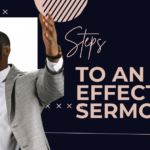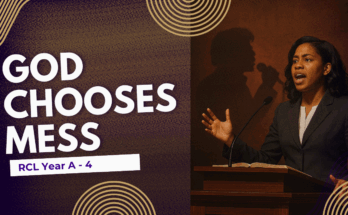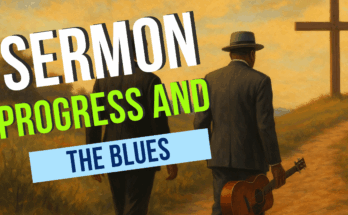As an Amazon Associate I earn from qualifying purchases.
Subscribers to the SoulPreacher have already received this article in the 31st edition of the Soul Preacher email magazine. In addition, those who have attended our second web seminars have seen the expansion of this concept. However, everyone else can now learn from this very powerful way of looking at exegesis of the text for preaching.
Exegesis can be seen as looking at the Biblical text from different angles and different depths recursively. You don’t just read the text once, you read it many times. In addition, you don’t just look for the same things every time, you look for different things in each reading. I have begun thinking about the exegetical process as one of waves.
The First Wave – Initial Introduction to Your Text
Here we are introduced to the text. We first must pray for God’s enlightenment. Then we read the text out loud. We are not necessarily looking for anything but for God to speak to us. This might be seen as a “devotional” type reading. However after reading this text, you should note everything that comes to your mind that is related to the text. You may think about a hymn your grandmother used to sing. Note that if it is related. You may think of a gospel song. You may think of a television show or story. You may think of other Biblical characters and ideas. A particular word may jump out at you. All of these things should be noted and written down.
It is possible that there may be certain things you don’t understand, go ahead and note those, this will be places to come back and look at. Note all of these things and try to reduce it down to one-two pages. This process of making it compact will help you to really understand the text.
The Second Wave – Going into the text deeper
Here we are attempting to answer all the questions that we can answer from the Bible without referring to commentaries, dictionaries, or other folks sermons. You do want to look at cross references though. For that I would suggest the Treasury of Scriptural Knowledge. Look up important aspects of the text in that book and find all the cross references. These will help to round out knowledge of your particular text by looking at other texts.
Here you want to determine the story in the text. What is the narrative? What is going on? Who are the characters? What are the characters doing? What is God doing? These are some of the questions that you will ask during this phase. You also want to look at the use of power in the text. Who has the power? How do we get the power? Is the power beneficial?
In addition look at the theology presented in the text. What does the text have to say about God? What does it have to say about that which is transcendent? What does it have to say about living in this world?
Finally you want to make specific reference to HOW the author of the text tells the story. What words were used? Why would the author use those types of words? What arguments are used? How are they related to us? During this phase you will use cross references and a number of bible Translations. The key is that we are only looking at the Bible.
Then refine your one-two page exegesis to include that which you have discovered in this phase.
The Third Wave – Help from Others
Now you want to see the questions that you still have left and look them up using Bible Dictionaries and Commentaries. What have others said about the text? Does it agree with your observations? Do you think you should refine yours or the commentary needs to refine its understanding?
Another important source is the sermons of others. Find others who have preached on the subject and skim it. Often you can find valuable material like illustrations and the like from this practice.
Then you want to also make use of denominational resources. Our Methodist friends would most certainly see what John Wesley has to say about the subject. Those in the reformed tradition would break open John Calvin to gain insight into the subject. The Seventh-day Adventists would bring Ellen G. White into conversation at this point. Here you want to look at what others from your ecclesial heritage has had to say on the subject.
Go ahead and refine the exegesis again with what you have discovered here.
The Fourth Wave – Walking through the text
Now you are ready for what I consider to be a very important phase that is often overlooked. Here you should take a stroll through the text. You should walk and live in the text. If you are preaching about the sermon on the mount, then you are not ready to preach it until you have experienced the first, second, and third wave, and then walk in the text. You should look over at the mount. How does it look? If you don’t know then pull out a geography book and the bible dictionary again and see. How is the weather? you may not know, but you might get some insight form a good bible dictionary. What kinds of foliage are around you? What is the temperature?
How many were there listening? Where are you sitting? How does Jesus’ voice sound? Are there other competing sounds? What do you smell? Are there animals near by?
and finally, ask yourself about the emotions in the characters. What emotion does Jesus have? How is he showing it? What about the listeners? Are there some smiling and other frowning? What emotions does it stir in you?
You cannot answer all of these questions, but you can answer many of them. And answering these types of questions will help you really experience the text, and also help others experience the text.
One might ask “what difference does this stuff make?” That is a good question. Let me say that I once preached a sermon that was enriched by my knowledge of the terrain of the wilderness that Jesus was “driven” into by the Holy Ghost. That terrain was slanted downward. Can you talk about how Jesus was driven into a terrain that was slanted downward into a dead sea? Can you help someone who feels like they have been sent into a wilderness by God, but not just a wilderness, but one that is slanted downward?
After doing this refine the exegesis again, and now you are ready to begin constructing your sermon.
Amazon and the Amazon logo are trademarks of Amazon.com, Inc, or its affiliates.







One Comment on “Exegeting a Text of Scripture – The Four Waves”